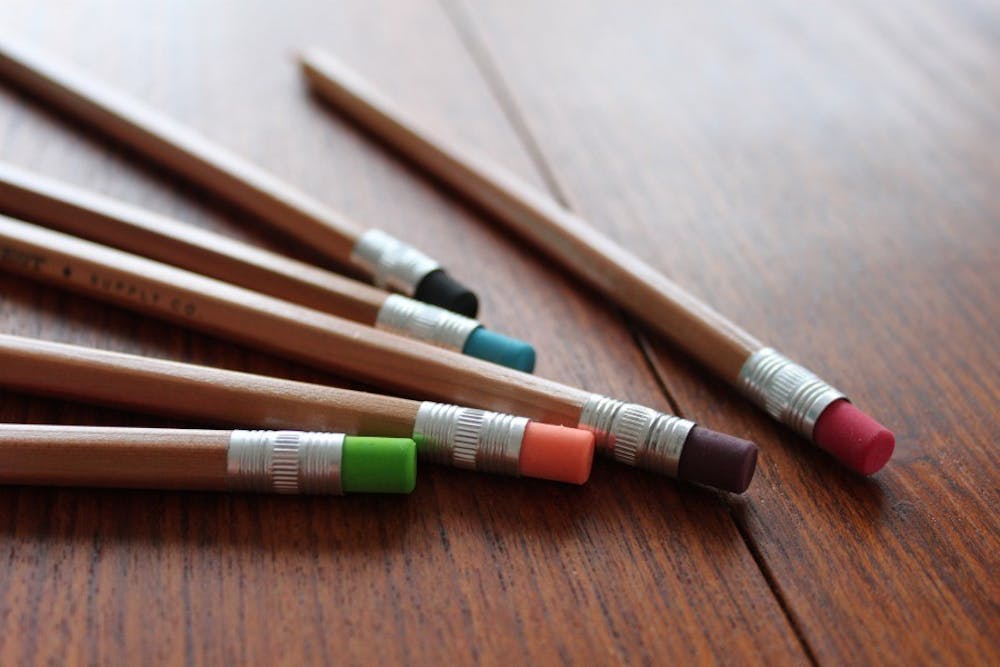By Riley Steiner, For The Miami Student
On a typical Friday afternoon at The Knolls Retirement Community, residents gather to create art with their friends. There's something different about these friends, though, because these friends are Miami University students.
This week's session at The Knolls begins with a song - "You Are My Sunshine." Voices young and old rise around the room, singing the lyrics together.
This is the beginning of a session of OMA.
The Opening Minds through Art (OMA) program, offered through Miami's gerontology program, is an intergenerational art program for people with dementia. Every week, students in the program visit nursing homes in the community to create art with their partners who live there.
Elizabeth Lokon founded the program in 2007. While observing residents of nursing homes, she saw a need for increased engagement for people with dementia.
"People don't seem to know how to tap them, how to engage them," she said. "Most of the time, the elders are not engaged, because the tasks that are given to them are both too juvenile, too simplistic, but at the same time too difficult, because it doesn't take into account their condition with memory issues."
According to the Alzheimer's Association, dementia is not a specific disease, but instead a term referring to a decline in cognitive ability that interferes with everyday life. Memory loss is just one example of a dementia symptom.
As part of her observation, Lokon spent a summer living in a nursing home in Milwaukee. It was there that she started to think about implementing an art program for dementia patients back at Miami.
"I didn't connect with [the nursing home residents] until I saw somebody else doing art [with them] and then suddenly they were really engaged and they were active," Lokon said. "And I thought, that's probably the passage to connect to them, by tapping their creativity, because that's not affected by the disease. It's memory that is affected by the disease, but not imagination."
When students sign up for the program - offered each semester as a pass/fail, one-credit-hour course - they spend the first four weeks learning about the symptoms and effects of dementia, the expectations of the program and the skills they can use to communicate with their partners.
Because each student is assigned one partner for the whole semester, they can build a relationship week by week. By the end of the term, they've created a friendship that lasts long after the semester ends.
"OMA's mission is to break down barriers," said Josie Rader, a second-year graduate student pursuing a master's degree in gerontology. "Through this program, their dementia and age doesn't matter anymore. It's more about the relationship between the student and the adult."
Lokon said that since art-making is a form of risk-taking, the relationship between student and elder is important.
"People don't want to be judged," Lokon said. "So they have to have that comfort with a partner, and that relationship base becomes the comfort. And then with that comfort they open up, they become more confident, they flourish, and then eventually they take risks and they surprise themselves that they can be creative."
The program emphasizes students helping the elders, not creating their art for them. The students help the artists mix paint and talk through ideas, and then the artists go to work. "What do you think?" is a question that pops up throughout the session, encouraging participants to take creative risks and form original ideas.
Lokon said engaging through art improves the elders' well being.
One of the OMA artists at The Knolls agrees.
"You do not have to be an artist," the resident said. "You just use your mind. I think that's what's good for people. I know it's good for me."
Lokon said students benefit from the program, too - learning compassion, patience, communication and listening skills. It pushes them out of their comfort zone by allowing them to build a genuine relationship with someone they never would have interacted with otherwise.
As Friday's session wraps up, projects are hung to dry - each uniquely different from the rest. One artist has created a pattern of multicolored stripes. Another finishes a blue-and-gold beach scene, complete with birds and clouds. She calls it "Along the Seashore."
The session closes with another song. This time, it's "This Little Light of Mine," and, once again, the room is filled with voices singing together - young and old.

